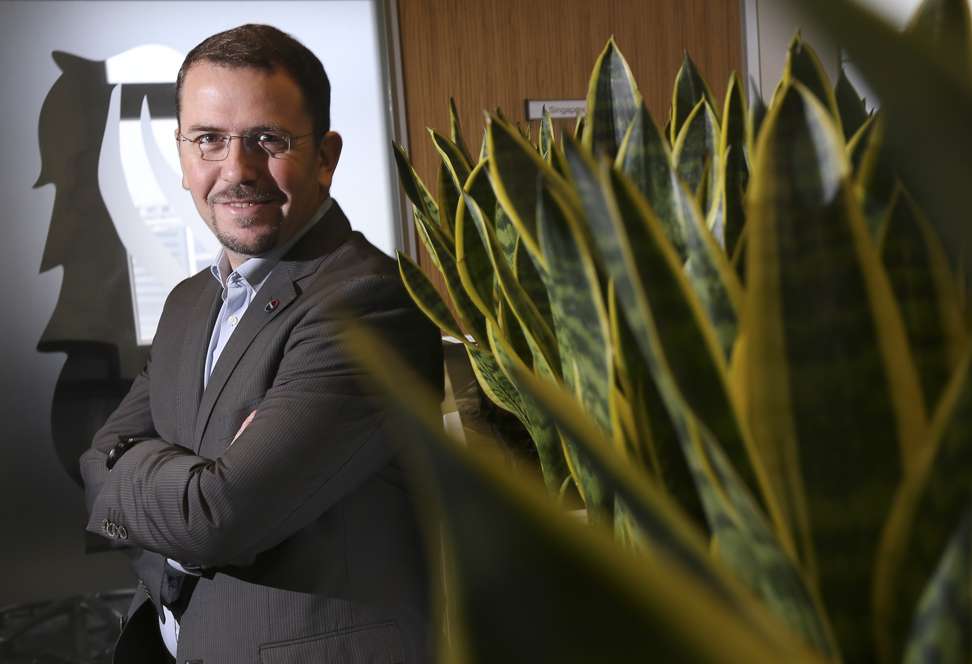Covestro, one of the world’s largest
makers of polymer, a group of base chemicals used in many manufacturing
industries, says it has developed a new material to make wind turbine
blades stronger and cheaper to build, and enhance wind power’s cost
competitiveness.
The Germany-headquartered company has
successfully developed in Shanghai the first polyurethane rotor blade
for wind turbines globally, Samir Hifri, Covestro’s head of supply chain
centre for Asia-Pacific and managing director of its Hong Kong office
told the Post in an interview.
A demonstration blade has been produced
by its business partner in Inner Mongolia autonomous region, and is
expected to be installed in turbines for prototyping later this year in a
wind farm in northwestern China, he said.

“We are partnering with top turbine and
blade producers in China,” he said. “Several projects are ongoing in
parallel and polyurethane-based blades will be installed in various
locations in China in 2017.”
Such blades are 20 to 40 per cent
stronger and more durable than existing ones made with epoxy material,
he claimed, adding the polyurethane material has recently been certified
by international certification body DNV.
“We are working with WINDnovation
Engineering Solutions, the leading rotor blade designer in the world, to
quantify the benefits of polyurethane under different circumstances,”
Hifri said, adding Covestro has patented the materials infusion
technology for this application.
Covestro is also working on marketing the material to its customers in China and elsewhere.
We are doing research and development projects that are not only supporting [our business in] China but elsewhere in the world
The new manufacturing method increases
the durability and longevity of wind blades that are often exposed to
harsh weather conditions, and speeds up the process for making the
blades “significantly,” Hifri said.
This helps cut their production cost
compared to traditional blades, and allow blades to be made lighter but
longer so that they can generate more power, since the wind can push
against a greater area of the blade, he added.
China has the world’s largest wind
power generation capacity and also some of the largest wind turbine
makers. The country accounted for 15 per cent of Covestro’s global sales
in 2015.
Hifri said the “innovation” was developed by the company’s Shanghai research and development centre, set up in 2001.
Together with production facilities, Covestro has accumulatively invested around €3 billion (HK$24.8 billion) in China.
“When we set up the R&D centre, it
was located in some farmland in the outskirts of Pudong, Shanghai,” he
said. “At the time, the primary purpose was around taking solutions for
the automotive and construction sectors invented in Europe and North
America and adapt them to the local needs in China.”
“But now it is totally different, we
are doing research and development projects that are not only supporting
[our business in] China but elsewhere in the world.”
He said Covestro’s Chinese customers
have become “much more demanding” over the years, not only seeking to
have material solutions already commercialised abroad, but also those
that are most relevant to the China market.

The 37.5-metre, 6-tonne rotor blade
that Covestro helped make was fabricated with its “special polyurethane
infusion resin” and “glass fibre mats” from glass fibre maker Chongqing
Polycomp International, he added.
Infusion of the materials was made
possible with a “vacuum pressure infusion” system developed by German
process technology developer Hubers.
“This is the first time we were able to
invent a solution for the wind energy sector,” Hifir said. “We tried
for a number of years ... in fact, our colleagues in Germany had kind of
given up on finding a solution to this, but we gave the project to our
Chinese researchers who achieved success.”
Establishment of the research centre in
Shanghai and the subsequent “courageous” decision to relocate
Covestro’s global business hub for polycarbonate products from Germany
to Shanghai in 2011 have helped the company understand its customers’
needs better, he said.
“Our management believes strongly that
in order to be closer to the customers of the largest market, it is
important to be as physically close to them as possible [to facilitate]
projects execution and innovation,” he said.
China is the largest market globally
for polycarbonate, a class of chemicals often used in car parts to make
vehicles lighter and more fuel-efficient while retaining strength and
safety features.
Covestro is 69 per cent-owned by German
drugmaker Bayer, which has indicated a plan to completely divest its
stake in Covestro after its separate listing on the stock market in
October 2015, without giving a time frame.
Some US$1.7 billion from the initial
public offering was mainly used to repay debt owed to Bayer, so that the
latter can deploy more resources to develop its health care and
pesticide businesses.
source: http://www.scmp.com
No comments:
Post a Comment